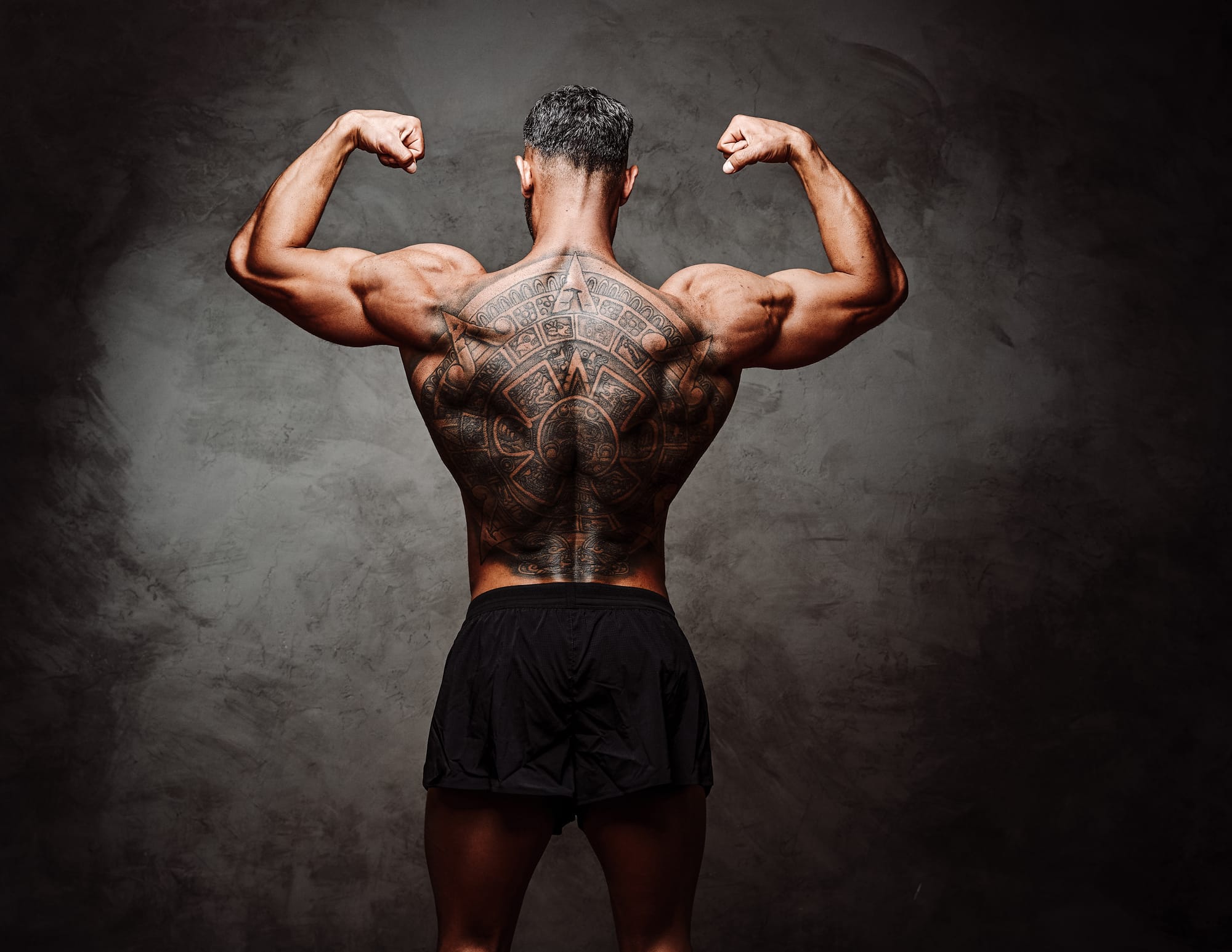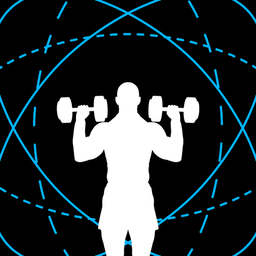Do These 3 Back Exercises for a Massive Back
Despite how big the back may look or the sheer number of muscles it comprises, there are only 3 back exercises you need to absolutely blow it up.

IMO, there’s no better way to start this article than this:
(Here’s the other picture that almost made the cut — as you can tell, it was a close fight.) “Um,” you might be (politely) thinking, “Is there a point you’re trying to make?”
The answer is yes.
And that is … despite how big the back may look or the sheer number of different muscles it comprises, there are only 3 back exercises you need in your training routine to absolutely blow it up. 🔥
Only 3 back exercises?! Are you sure? 👀
Watch this:
@btosteopathy 👉🏼 The posterior muscles of the back form a complex network that extends from the base of the skull to the pelvis. . These muscles can be broadly categorized into superficial, intermediate, and deep layers. . Each layer plays a vital role in stabilizing the spine, maintaining posture, facilitating movement, and protecting vital structures. . 👉🏼 Superficial Layer: . ▪️Trapezius Muscle: The trapezius muscle is responsible for various movements of the shoulder girdle. It enables elevation, depression, retraction, and rotation of the scapula, contributing to the proper functioning of the upper limb. . ▪️Latissimus Dorsi Muscle: connects the upper extremity to the vertebral column. It plays a crucial role in arm adduction, extension, and medial rotation, aiding in activities such as pulling, pushing, and throwing. . 👉🏼Intermediate Layer: . ▪️Rhomboid Muscles: The rhomboid major and rhomboid minor muscles lie beneath the trapezius and attach the scapulae to the thoracic vertebrae. They retract and stabilize the scapulae, promoting correct posture and facilitating movements involving the shoulder girdle. . 👉🏼 Deep Layer: . ▪️Erector Spinae Muscles: consisting of the iliocostalis, longissimus, and spinalis muscles, span the entire length of the vertebral column. These muscles play a pivotal role in maintaining upright posture, spinal extension, and lateral flexion. . ▪️Transversospinalis Muscles: comprising the semispinalis, multifidus, and rotatores muscles, is situated deep within the erector spinae muscles. They contribute to the stabilization, rotation, and extension of the spine, allowing for fine motor control and proprioception. . Interconnected Function and Postural Impact: . The posterior muscles of the back work synergistically to provide stability, strength, and coordinated movement to the human body. . Optimal functioning of these muscles is crucial for maintaining proper posture and preventing musculoskeletal imbalances that can lead to pain and dysfunction. . #humananatomy #btosteopathy #backmuscles #posteriorchain #muscles #manualtherapy #manualosteopathy #functionalanatomy #posture #badposture
♬ Similar Sensation (Instrumental) - BLVKSHP
While there are many back muscles, most are small and buried deep within; they’re fused with your vertebral column. It’s not that they’re useless. It’s just that they won’t contribute much to your back size.
Instead, the major mass contributors are the last few superficial back muscles you see near the end of the video:
- Mid and upper back (traps, rhomboids, rear delts): For back thickness
- Lats (which can be split into upper and lower lats): For that enviable V-taper
OK, so which 3 back exercises?
Before we reveal the 3 back exercises, though, let’s first address those question marks in your mind.
Yes.
Based on muscle fiber angle and internal moment arms, the lats aren’t simply a solitary unit but 2 distinct “parts”:
#1: Lat pulldown (lower lats)
This means that to target your lower lats, you’ll want to use the lat pulldown.
But there are a few common form mistakes that you’ll want to fix to maximize lower lats activation (and, in turn, growth):
Remember that shoulder adduction = lower lats.
So, if you keep your elbows flared like chicken wings on the lat pulldowns, you greatly reduce lower lats involvement.
Ditch the “traditional” straight bar lat pulldown attachment and go for either a MAG grip (find one that keeps your arms roughly shoulder-width apart) or a V-bar.
Ideally, you want to be vertical at the top of the movement to maximize the stretch (find out why the stretch matters so, so much for hypertrophy in this article) and only lean back ~10 to 15 degrees, max, at the bottom.
A little momentum is fine when you’re almost at the end of your set and pushing close to failure.
But you shouldn’t be relying on momentum to get the weight down throughout your set — that’s cheating and ego-lifting rolled into one.
#2: Machine chest-supported low row (upper lats)
So, the chest-supported low row (use the close, neutral grip) will bring your arms behind the body, targeting your upper lats.
Once again, keep your elbows tight against your body as you pull and your reps slow and controlled to maximize upper lat involvement.
@billygymwilly chest supported lat low row
♬ Halloween ・ cute horror song - PeriTune
Note: we chose the chest-supported row machine for the superior stability it provides.
But if it’s not available in your gym, these alternatives come close:
- Cable rows (shoulder-width, neutral grip)
- T-bar rows
- Dumbbell rows (keep elbows close to your torso)
#3: Chest-supported high row (mid and upper back)
Another reason we chose the chest-supported high row?
Simply switching your grip from the close, neutral variant to the high one helps you target your mid and upper back — perfect for when the gym’s super crowded and you want to get your workout done ASAP.
Unlike with the lats, you want your elbows flared out on this exercise to better target the mid and upper back.
But if your gym doesn’t carry the machine (or if there’s always someone doing, like, 20 sets of rows on it 💀), try these alternatives:
- Cable wide-grip row
- Dumbbell rows (with flared-out elbows)
- Smith machine bent over rows (better than the barbell because you don’t have to worry so much about stability)
@bradjacksonpt Grow your upper back with these exercises 🦍 👉🏼 Chest supported Machine Rows provide fantastic contractions and controlled stretches. With the right machine, they isolate each side perfectly, helping with muscle imbalances. 👉🏼 Chest Supported DB Rows are very similar to the first exercise, as they provide a stable position to stretch and contract the muscles. I find these slightly worse then the first, as you pull directly against gravity, making it harder to get full ROM in the later reps. 👉🏼 Wide Grip MAG seated Rows are the best way to target uper back out of these exercises. Done properly, you can acheive a good stretch and contraction, targeting the rear delts and upper traps. #backexercises #backworkout #workoutroutines #backday
♬ (TRAINING DAY) - Instrumental - RayKeyz
What about bodyweight back exercises?
Here’s what you need to know.
Equipment-free, bodyweight back exercises are limited in how much they can help grow your back, especially as you become a more experienced and advanced lifter. So, our advice is to rely only on them if you’re truly in a pinch.
And of all the bodyweight back exercises that don’t require any equipment (not even a pull-up bar), one stands out: the I-Y-T raises.
Here’s how to perform the exercise:
Um, of course, if you have a pull-up bar, do your pull-ups and your inverted pull-ups (vary your grip to preferentially target your upper lats or mid and upper back).
Why you (probably) don’t need to worry about your lower back
If you’re following a well-planned, well-rounded training plan, you’re likely also targeting your glutes and hamstrings with the following exercises:
- Romanian deadlifts
- Back extensions
- Glute-ham raises

These will do a great job of strengthening your lower back muscles.
Wait, what’s that? You’re not following a well-planned, well-rounded training plan? Oooooh.
Well, it’s time to fix that with GymStreak.
Just input your lifting level and training preferences into this smart, AI-powered workout planner, and you’ll instantly receive your tailored gym routine.
It also comes with nutrition tracking features, so you can be sure you’re fueling your body right for all the growth it needs to do.
Interested? Here’s a sneak peek of the app:
References
Modes, Robert J., and Sevda Lafci Fahrioglu. “Anatomy, Back.” StatPearls, StatPearls Publishing, 2024. PubMed, http://www.ncbi.nlm.nih.gov/books/NBK539746/.


